Professional, peer-reviewed papers about geology from the perspective of a recent creation and global Flood within a biblical framework.
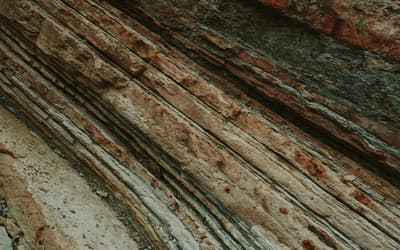
Simulating Biostratigraphy to Test Faunal Succession
Nathan W. Mogk • Oct. 15, 2025
The goal of this study is to isolate the effects of an evolutionary assumption during biostratigraphic interpretation by simulating the fossil record.
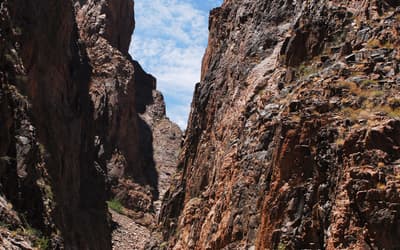
Radiohalos in the Grand Canyon Precambrian Crystalline Basement Rocks. Part 2. The Schists
Dr. Andrew A. Snelling • July 30, 2025
This study of the schists that host Grand Canyon’s Precambrian crystalline basement assesses the significance of the Po radiohalos within the earth’s history, especially within the biblical framework.
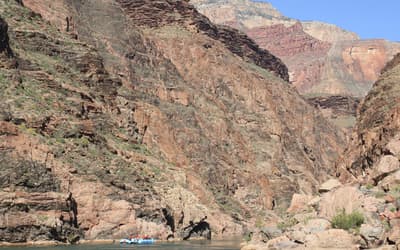
Radiohalos in the Precambrian Crystalline Basement Rocks of Grand Canyon: Part 1. The Granites
Dr. Andrew A. Snelling • May 21, 2025
Systematic study was undertaken of radiohalos present in the granites of Grand Canyon’s Precambrian crystalline basement to assess their significance within the earth’s history.
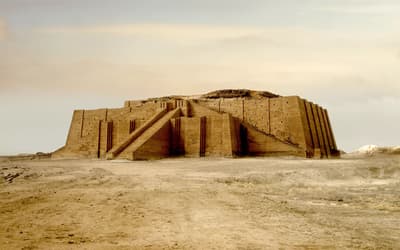
The Tharthar Depression is Not the Escarpment: Reply to Griffith and White
Anne Habermehl • March 19, 2025
There are implications for the location of the Tower of Babel.

To the Ark, and Back Again? Using the Marsupial Fossil Record to Investigate the Post-Flood Boundary: A Reply
Chad Arment • Jan. 8, 2025
Chad Arment responds to Nathan Mogk’s 2025 critique of his 2020 marsupial migration model.

To the Ark, and Back Again? Using the Marsupial Fossil Record to Investigate the Post-Flood Boundary: A Comment
Nathan W. Mogk • Jan. 8, 2025
Nathan Mogk questions Chad Arment’s 2020 marsupial migration model.

Oard’s Ice Age and Settlement of Northern Europe on Masoretic and Septuagint Timelines
Eric J. Tweedy • Dec. 11, 2024
Evaluation of Oard’s Ice Age model, comparing Masoretic and Septuagint timelines and using historical references on Babel and northern Europe’s colonization to assess the 700-year duration.

The Genesis “Fountains of the Great Deep” in Christian Theology and Geology: History and Theology
James E. Patrick , et. al. • Dec. 4, 2024
The thesis of this two-part paper is that the Genesis “fountains of the great deep” carries powerful theological and geological implications not to be ignored.

The Matkatamiba Fold, Central Grand Canyon, Arizona
Dr. Andrew A. Snelling • Sept. 4, 2024
Because the Muav beds were still soft less than a year after rapid burial, they formed the bending in the Matkatamiba fold. Thus, nearly 500 million years of “geologic history” can be eliminated.

Chronological Framework of Ancient History. Papers 1–5: Response
Kenneth C. Griffith , et. al. • Aug. 7, 2024
Griffith and White respond to Habermehl’s criticisms by demonstrating a model that integrates geological, archaeological, and historical records with the Ussher-Jones Chronology.
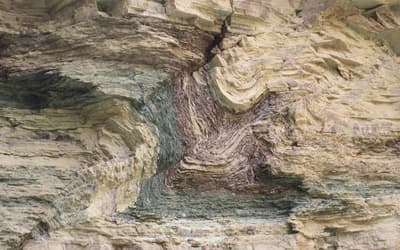
The Whitmore Helipad Fold, Western Grand Canyon, Arizona
Dr. Andrew A. Snelling • Feb. 28, 2024
The Bright Angel Formation beds easily responded to soft-sediment deformation to form the smooth bending in the Whitmore Helipad fold.

Bible-Based Knowledge (Science)
Richard Overman • Jan. 17, 2024
This paper proposes biblically based scientific philosophies as well as providing suggested mechanisms for the development of a bible-based scientific model for the four major scientific communities.
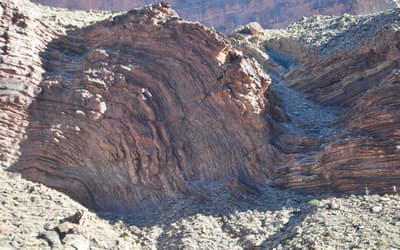
The Monument Fold, Central Grand Canyon, Arizona
Dr. Andrew A. Snelling • Aug. 9, 2023
Because the Tapeats Sandstone beds were still relatively unlithified and soft less than a year after rapid burial, they easily responded to soft-sediment deformation.
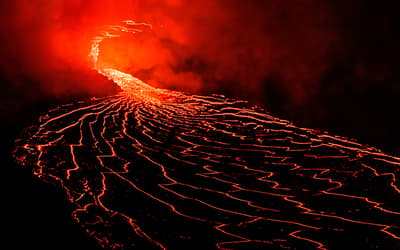
Heat Problems Associated with Genesis Flood Models—Part 4: Heat Deposited by Magmatic Activity
William Worraker • May 17, 2023
In Part 4 of this series key sources of Flood heat are identified. The primary concern is with the heat deposited as a result of Flood and post-Flood magmatic activity.
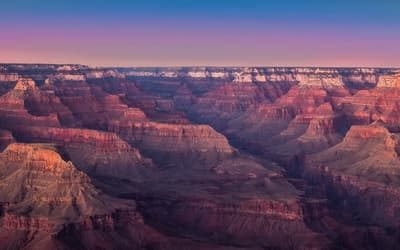
The Carbon Canyon Fold, Eastern Grand Canyon, Arizona
Dr. Andrew A. Snelling • Feb. 22, 2023
Because the Tapeats Sandstone beds were still damp and soft, they easily responded to the soft-sediment deformation to form the smooth bending in Carbon Canyon.

The Petrology of the Muav Formation, Tonto Group, Grand Canyon, Arizona
Dr. Andrew A. Snelling • Aug. 10, 2022
Investigation of the nature of the folding of the Cambrian Tonto Group strata in Grand Canyon necessitates first investigating the petrology of those strata.

The Evolution of Asexual to Sexual Reproduction: The Queen of Evolutionary Problems
Dr. Jerry Bergman • Dec. 15, 2021
The evidence is overwhelming and widely recognized by evolutionists that evolution by small steps cannot bridge the transition from asexual to sexual reproduction.
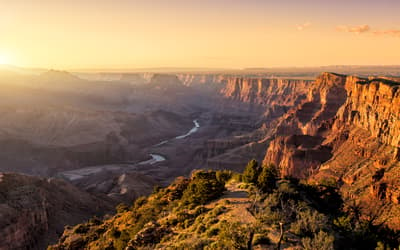
The Petrology of the Bright Angel Formation, Tonto Group, Grand Canyon, Arizona
Dr. Andrew A. Snelling • Sept. 8, 2021
Investigation of the nature of the folding of the Cambrian Tonto Group strata in Grand Canyon necessitates first investigating the petrology of those strata.
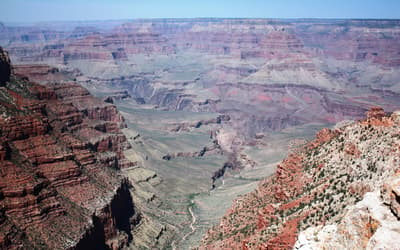
The Petrology of the Tapeats Sandstone, Tonto Group, Grand Canyon, Arizona
Dr. Andrew A. Snelling • June 23, 2021
The petrology of the Tapeats Sandstone is consistent with the global Genesis flood.
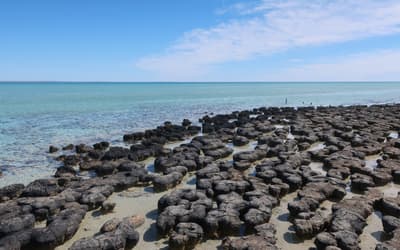
Using Stromatolites to Rethink the Precambrian-Cambrian Pre-Flood/Flood Boundary
Ken P Coulson • May 5, 2021
Many creationists are actively engaged in finding the Flood/post-Flood boundary, but most creationists consider the Precambrian-Cambrian contact more attractive.
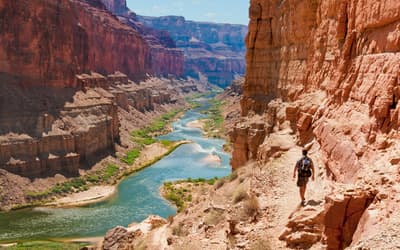
The Grand Canyon, Monument to an Ancient Earth: The Deceptions Continue
Dr. Terry Mortenson • Dec. 2, 2020
The Grand Canyon, Monument to Ancient Earth? rejects the truth of Genesis regarding the Flood and the age of the earth.

Implications of Creation Biology for a Neogene-Quaternary Flood/Post-Flood Boundary
Chad Arment • Nov. 4, 2020
While several current Flood models posit an Upper Cenozoic Flood Boundary, none of them address the problem of biblical kinds and their relationship Genesis.

Inerrancy and Biblical Authority: How and Why Old-Earth Inerrantists Are Unintentionally Undermining Inerrancy
Dr. Terry Mortenson • Sept. 16, 2020
The old-earth signers of the CSBInerrancy unintentionally violated their own principles of interpretation and unintentionally undermined the inerrancy and the authority of Scripture.
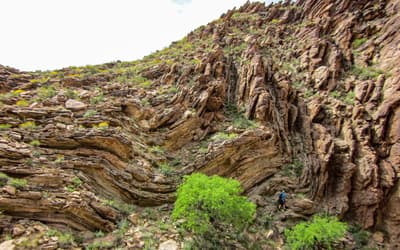
Remembering Spillover Erosion of Grand Canyon
Dr. Steve Austin , et. al. • Sept. 9, 2020
We should remember an important fact—creationist and evolutionist thinking about spillover continues to make a significant contribution to our understanding of erosion of Grand Canyon.

It’s for the Birds: Avian Fine-Tuning of Flood Chronology
Dr. Steven W. Boyd • Aug. 26, 2020
Genesis 8:5–13 reveals the character of Noah and delimits the time of the water’s becoming powerful to between 16 and 23 days after the Flood began.

Heat Problems Associated with Genesis Flood Models—Part 3: Vapour Canopy Models
William Worraker • Aug. 5, 2020
The biblical and scientific arguments for a pre-Flood vapour canopy do not support the theory.

To the Ark, and Back Again? Using the Marsupial Fossil Record to Investigate the Post-Flood Boundary
Chad Arment • April 8, 2020
There is no debate as contentious as the post-Flood boundary issue within creation science.
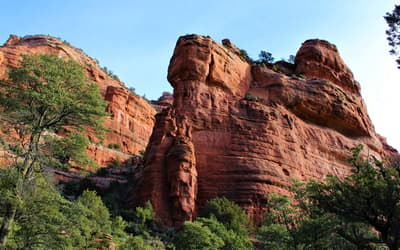
Lithostratigraphic Correlation of the Coconino Sandstone and a Global Survey of Permian “Eolian” Sandstones: Implications for Flood Geology
Dr. John H. Whitmore • Oct. 23, 2019
The cross-bedded Coconino Sandstone (lower Permian, Arizona) is often used as a “type” ancient eolian sandstone.
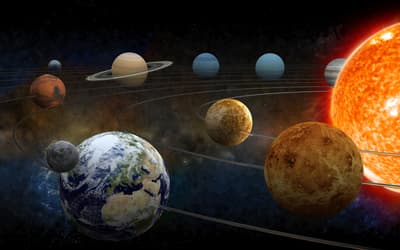
An Evaluation of Astronomical Young-Age Determination Methods I: The Solar System
Dr. Danny R. Faulkner • Sept. 25, 2019
Evaluating 25 astronomical arguments for recent origin for the solar system found some to be wanting and others appear to be sound.

Heat Problems Associated with Genesis Flood Models—Part 2: Secondary Temperature Indicators
William Worraker • Sept. 18, 2019
The Genesis Flood produced drastic geological changes involving extremely energetic processes which also generated an enormous heat load.

The Challenge of Fossil Forests for Creationist Research
Warren H. Johns • Aug. 7, 2019
The central issue among creationists is whether any purported fossil forests are truly autochthonous.

How Scholars’ Perceptions of the Semantic Range of יוֹם Have Affected Their Discussions of the Age of the Universe: Part 3
John C. P. Smith • July 17, 2019
The study looks at delineations and definitions of יוֹם in Scripture, and in lexical and other sources.

How Scholars’ Perceptions of the Semantic Range of יוֹם Have Affected Their Discussions of the Age of the Universe: Part 2
John C. P. Smith • April 24, 2019
There is a considerable disconnection between lexicography regarding יוֹם and the formation of creation theology.

How Scholars’ Perceptions of the Semantic Range of יוֹם Have Affected Their Discussions of the Age of the Universe: Part 1
John C. P. Smith • March 13, 2019
There is a considerable disconnection between lexicography regarding יוֹם and the formation of creation theology.
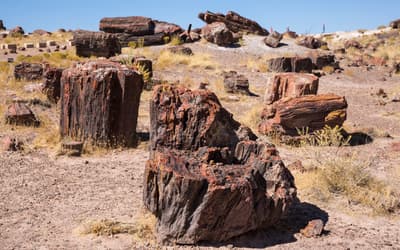
Fossil Grove and other Paleozoic Forests as Allochthonous Flood Deposits
Kurt P. Wise • Nov. 7, 2018
Fossil Grove offers multiple evidences in support of a huge forest biome floating atop the world’s pre-Flood oceans.

Heat Problems Associated with Genesis Flood Models—Part 1: Introduction and Thermal Boundary Conditions
William Worraker • July 11, 2018
The Genesis Flood produced drastic geological changes involving extremely energetic processes which also generated an enormous heat load.

Numerical Modeling of the Large-Scale Erosion, Sediment Transport, and Deposition Processes of the Genesis Flood (Revised)
Dr. John Baumgardner • June 27, 2018
This paper describes a numerical model for investigating the large-scale erosion, transport, and sedimentation processes associated with the Genesis Flood.
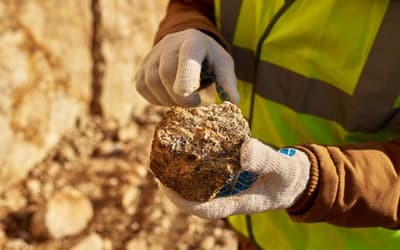
Problems with the U-Pb Radioisotope Dating Methods—2. U and Pb Mobility
Dr. Andrew A. Snelling • June 13, 2018
Since the amount of U and Pb mobility in most cases has been small, then the determinations can be used to provide useful relative ages.
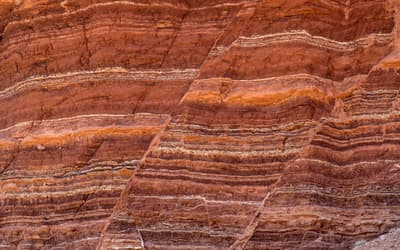
The Sedimentary Record Demonstrates Minimal Flooding of the Continents During Sauk Deposition
Dr. Timothy L. Clarey , et. al. • Dec. 6, 2017
The published global sea level curve is inaccurate in an absolute sense, and the Sauk megasequence represented only a partial start to the global Flood.

Rounding of Quartz and K-Feldspar Sand From Beach to Dune Settings Along the California and Oregon Coastlines: Implications for Ancient Sandstones
Dr. John H. Whitmore , et. al. • Nov. 15, 2017
Size and roundness statistics were generated for 17 samples. The quartz and K-feldspar showed statistically significant rounding from the beach to the dune.

Colossal Water Flows During Early Creation Week and Early Flood
Harry Dickens • Sept. 27, 2017
North America’s Proterozoic geology provides evidence for enormous erosion and the formation of extensive water flow systems, even spanning the continent.

Problems with the U-Pb Radioisotope Dating Methods—1. Common Pb
Dr. Andrew A. Snelling • July 26, 2017
Problems remain in the interpretation of the measured Pb isotopic ratios to transform them into ages.
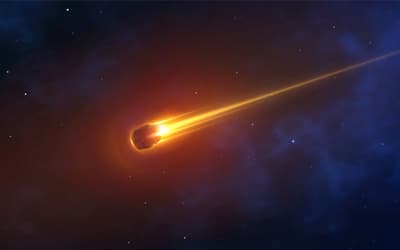
Do the Data Support a Large Meteorite Impact at Chicxulub?
Dr. Timothy L. Clarey • March 8, 2017
The evidence for a large impact at Chicxulub may not be as strong as generally believed. A case can also be made that there was no impact.

Rebuttal to “Reply to O’Micks Concerning the Geology and Taphonomy of the Homo naledi Site” and “Identifying Humans in the Fossil Record: A Further Response to O’Micks”
Jean O’Micks • Feb. 15, 2017
Baraminic analyses suggest that both H. naledi and H. floresiensis are not part of the human holobaramin.

Reply to O’Micks Concerning the Geology and Taphonomy of the Homo naledi Site
Matthew McLain • Feb. 15, 2017
The best hypothesis for the origin of the H. naledi assemblage in the Dinaledi Chamber is still intentional burial/disposal by other H. naledi.

Determination of the Decay Constants and Half-Lives of Uranium-238 (238U) and Uranium-235 (235U), and the Implications for U-Pb and Pb-Pb Radioisotope Dating Methodologies
Dr. Andrew A. Snelling • Jan. 18, 2017
Without accurately known decay half-lives, all radioisotope ages cannot be accurately determined or be considered absolute ages.

Do Varves, Tree-Rings, and Radiocarbon Measurements Prove an Old Earth?
Dr. Jake Hebert , et. al. • Dec. 7, 2016
The BioLogos Foundation published a popular-level article by old-earth geologists Gregg Davidson and Ken Wolgemuth presenting arguments for an old earth.

Scriptural Geology, Then and Now
Warren H. Johns • Nov. 30, 2016
The place of the biblical Flood in the geological record remains one of the most hotly debated issues among creationist geologists today.

The Nature of the Neo-Darwinian Evangelicals’ Criticism of Young-Earth Creationists
Jim Owen • Nov. 23, 2016
If we do not understand the dimensions of the war we are engaged in, we are already halfway to theological and historical oblivion.

Big Gaps and Short Bridges: A Model for Solving the Discontinuity Problem
Change Laura Tan • July 6, 2016
This paper argues that the issue with the origin of life and the origin of biodiversity is not an issue of time, though deep time is problematical.

Numerical Modeling of the Large-Scale Erosion, Sediment Transport, and Deposition Processes of the Genesis Flood
Dr. John Baumgardner • Feb. 24, 2016
Accounting for thick sediment sequences blanketing the surfaces of the continents is a paramount issue for understanding physical aspects of the Genesis Flood.
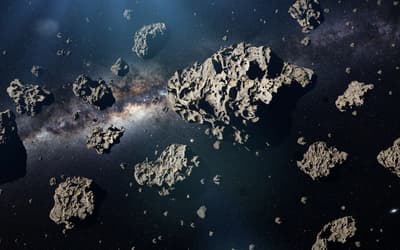
Radioisotope Dating of Meteorites: V. Isochron Ages of Groups of Meteorites
Dr. Andrew A. Snelling • Dec. 16, 2015
This contribution is designed to document the radioisotope dating data for groups of chondrites, stony achondrites, pallasites and mesosiderites, and irons.
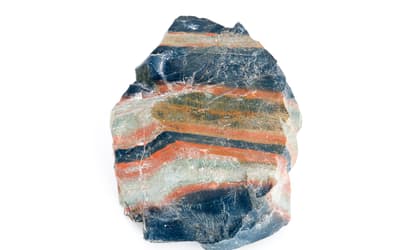
Terrestrial Vertebrates Dissolved Near Flood Fountains
Harry Dickens , et. al. • Nov. 18, 2015
Terrestrial vertebrates close to the Flood fountains dissolved then precipitated out to form Precambrian-Cambrian sedimentary phosphate deposits.

Determination of the Radioisotope Decay Constants and Half-Lives: Samarium-147 (147Sm)
Dr. Andrew A. Snelling • June 10, 2015
Over the last 80 years numerous determinations have been made of the 147Sm half-life.
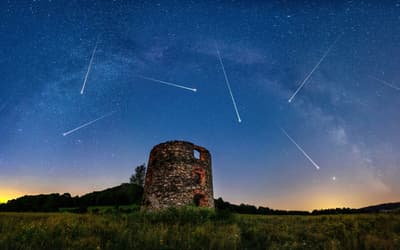
Radioisotope Dating of Meteorites: IV. The Primitive and Other Achondrites
Dr. Andrew A. Snelling • May 6, 2015
This paper documents radioisotope dating for meteorites, achondrites, angrites, aubrites, mesosiderites, and irons to further discuss significance of the data.

Physical Difficulties with Hugh Ross’ Local Flood Model
Dr. Danny R. Faulkner • April 15, 2015
There are at least three problems with Hugh Ross’ local flood model which render it physically impossible. This is in addition to numerous biblical issues.

Can One Astronomically Date the Flood within the Hydroplate Model?
Dr. Danny R. Faulkner • April 1, 2015
Dr. Danny Faulkner analyzes Dr. Walt Brown’s determination of the date of the Flood within his hydroplate model using the orbits of two comets.

Determination of the Radioisotope Decay Constants and Half-Lives: Rhenium-187 (187Re)
Dr. Andrew A. Snelling • Feb. 25, 2015
If the Re-Os dating method is calibrated against an uncertain “gold standard,” then it cannot be absolute and cannot be used to reject a young-earth timescale.

Intraformational Parabolic Recumbent Folds in the Coconino Sandstone (Permian) and Two Other Formations in Sedona, Arizona (USA)
Dr. John H. Whitmore , et. al. • Jan. 21, 2015
The hypothesis that Schnebly Hill and Coconino were deposited by marine sand waves on a shallow continental shelf is strengthened in light of these new data.

Radioisotope Dating of Meteorites: III. The Eucrites (Basaltic Achondrites)
Dr. Andrew A. Snelling • Dec. 31, 2014
This third paper documents the radioisotope dating data for more meteorites, so as to continue the discussion of the significance of these data.
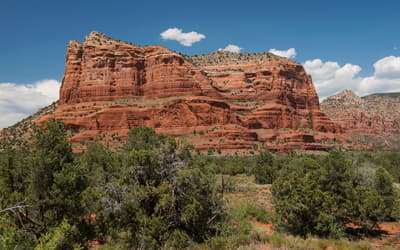
The Petrology of the Coconino Sandstone (Permian), Arizona, USA
Dr. John H. Whitmore , et. al. • Dec. 10, 2014
In light of these new data, alternative depositional models for the Coconino should be considered.
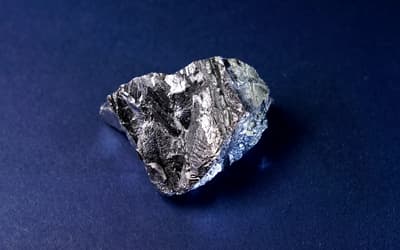
Determination of the Radioisotope Decay Constants and Half-Lives: Lutetium-176 (176Lu)
Dr. Andrew A. Snelling • Dec. 3, 2014
If the Lu-Hf dating method has been calibrated against the U-Pb “gold standard” with its own uncertainties, then it cannot be absolute.

Discerning Tyrants from Usurpers: A Statistical Baraminological Analysis of Tyrannosauroidea Yielding the First Dinosaur Holobaramin
M. Aaron • Nov. 26, 2014
In this study, I analyzed a theropod dinosaur group, Tyrannosauroidea, through the use of statistical baraminology.
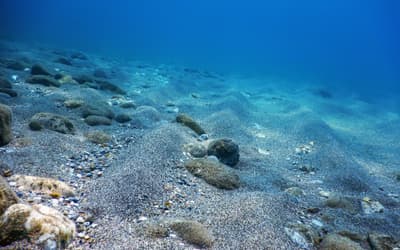
Circular Reasoning in the Dating of Deep Seafloor Sediments and Ice Cores: The Orbital Tuning Method
Dr. Jake Hebert • Aug. 27, 2014
The different dating systems are calibrated to one another: dates assigned to the seafloor sediments are used to date the ice cores, and vice versa.

Radioisotope Dating of Meteorites II: The Ordinary and Enstatite Chondrites
Dr. Andrew A. Snelling • Aug. 20, 2014
This paper documents the radioisotope dating data for more meteorites, so as to continue the discussion of the significance of these data.

A Discussion of Stellar Nucleosynthesis
Dr. Danny R. Faulkner • April 30, 2014
Astronomers have developed an elaborate, physically robust evolutionary theory to explain the abundances that we see throughout the universe. While this theory may be explanatory, it has no predictive

Radiohalos in Multiple, Sequentially Intruded Phases of the Bathurst Batholith, NSW, Australia: Evidence for Rapid Granite Formation during the Flood
Dr. Andrew A. Snelling • March 5, 2014
There is evidence for rapid granite formation during the Flood.

Stone Tools from the Early Tertiary in Europe—A Contradiction to Any Evolutionary Theory About the Origin of Man and to Long Geological Periods of Time
Michael Brandt • June 26, 2013
Approximately between 1860 and 1930, in some cases even later, there was a discussion about flint findings from Paleocene to Pliocene strata which were similar to tools.

Review of John Lennox’s Book Seven Days That Divide the World: The Beginning According to Genesis and Science
Simon Turpin • June 27, 2012
Lennox reasons that the church has been wrong in the past over its interpretation of Scripture in light of scientific discovery, and that those holding to a young earth are wrong again.

An Evaluation of the Myth That “Nothing in Biology Makes Sense Except in the Light of Evolution”
Dr. Jerry Bergman • Feb. 8, 2012
I reviewed both the textbooks used for life science classes at the college where I teach and those that I used in my past university course work.

Untangling Uniformitarianism, Level II: Actualism in Crisis
Dr. John K. Reed • Nov. 30, 2011
Although the term uniformitarianism was not introduced until 1832, the concepts that Lyell so cleverly fused together had already been operating in the nascent discipline of geology for some decades
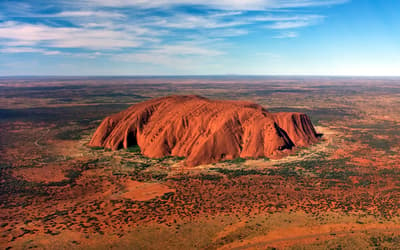
Geomorphology of Uluṟu, Australia: Reply
Ken Patrick • Sept. 21, 2011
Twidale and Bourne’s comments are appreciated by this author who respects their professional and long-standing experience in the field of modern geomorphology.

Geomorphology of Uluṟu, Australia: Discussion
J. A. Bourne , et. al. • Sept. 21, 2011
Controversy and informed debate are the lifeblood of scientific investigation. Thus Ken Patrick’s 2010 paper on the origin of Uluru is welcome.
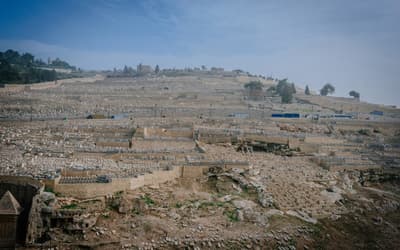
The Geology of Israel within the Biblical Creation-Flood Framework of History: 2. The Flood Rocks
Dr. Andrew A. Snelling • Dec. 15, 2010
The sedimentary strata that cover most of Israel are an obvious record of the Genesis Flood.
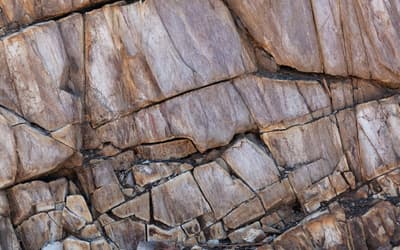
The Geology of Israel Within the Biblical Creation-Flood Framework of History: 1. The Pre-Flood Rocks
Dr. Andrew A. Snelling • Sept. 8, 2010
Understanding the geology of Israel would provide background to biblical events, and potential insights as to where and how they happened.
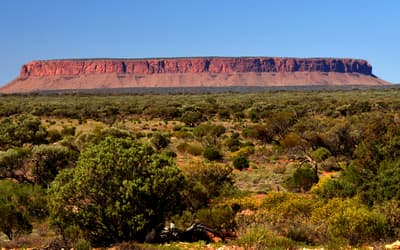
Geomorphology of Uluṟu, Australia
Ken Patrick • June 9, 2010
A Australian inselberg, Uluṟu, is an interesting geological feature in that its geomorphology is still a matter of controversy among conventional geologists.

Untangling Uniformitarianism
Dr. John K. Reed • March 17, 2010
Of the nine terms associated with uniformitarianism, seven can be replaced or eliminated, which refutes the accusation that diluvialists do not understand uniformitarianism.
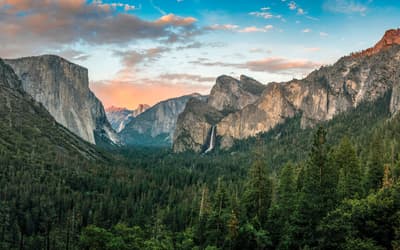
Numerical Simulation of Precipitation in Yosemite National Park with a Warm Ocean: A Pineapple Express Case Study
Wesley Brewer , et. al. • Feb. 17, 2010
Based on the likely increase in precipitation rate and frequency of storms following the Genesis Flood, glaciers thousands of feet thick would have developed in a few hundred years.

Systematic Theology Texts and the Age of the Earth
Dr. Terry Mortenson • Dec. 16, 2009
In the past few decades there has been a growing controversy in society and in the Church over evolution and the age of the earth.
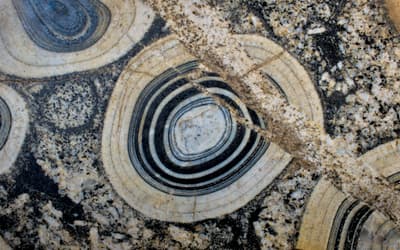
Implications of Polonium Radiohalos in Nested Plutons of the Tuolumne Intrusive Suite, Yosemite, California
Dr. Andrew A. Snelling , et. al. • April 8, 2009
Polonium radiohalos found in biotite flakes of granites in Yosemite National Park place severe time constraints on the formation and cooling of the granite plutons.
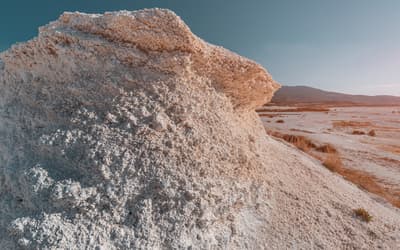
Chalk and “Upper Cretaceous” Deposits are Part of the Noachian Flood
John Matthews • March 25, 2009
Certain features of the “Upper Cretaceous” period correspond closely with the biblical account of the Noachian Flood around day 150, and uniformitarian explanations for “chalk” are inadequate.

The Origin of Oil—A Creationist Answer
John Matthews • Dec. 17, 2008
The dominant view of the origin of oil amongst western oil companies until 1969 was that it was due to the decay of living matter. Now other views are making themselves heard.

Radiocarbon Ages for Fossil Ammonites and Wood in Cretaceous Strata near Redding, California
Dr. Andrew A. Snelling • Dec. 10, 2008
Measurable radiocarbon has been detected in fossils from the earliest days of radiocarbon dating. When these data are put in perspective, their deadly significance to uniformitarianism is apparent.
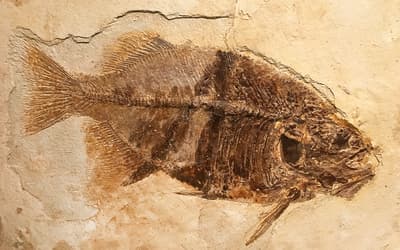
Green River Formation Very Likely Did Not Form in a Postdiluvial Lake
Michael J. Oard , et. al. • Sept. 24, 2008
The uniformitarians believe that the couplets in the Green River Formation are varves, but evidence militates against this interpretation

Mars, a Testament to Catastrophe
Charles Creager, Jr. • July 23, 2008
The unlikely geographic relationship between these gigantic features suggests a cause and effect relationship between them. This implies a global Martian catastrophe comparable to the Genesis Flood.

Testing the Hydrothermal Fluid Transport Model for Polonium Radiohalo Formation: The Thunderhead Sandstone, Great Smoky Mountains, Tennessee–North Carolina
Dr. Andrew A. Snelling • March 26, 2008
The regional metamorphism, the hydrothermal fluid flows, the cooling of the regional metamorphic complex, and the formation of the Po radiohalos all had to have occurred within a few weeks.
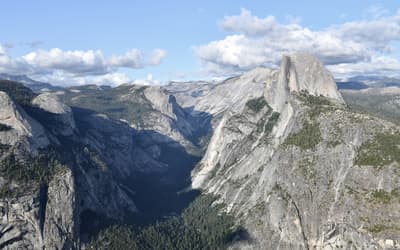
Catastrophic Granite Formation
Dr. Andrew A. Snelling • Feb. 6, 2008
The timescale for the generation of granitic magmas and their subsequent intrusion, crystallization, and cooling as plutons is no longer incompatible with the biblical time frames.
Geology on Answers Research Journal
Geology (Greek gē, “earth”, and -logia, “study of”) is the study of the earth, our planet home, and the ground beneath our feet. Geology studies the earth’s structure, its rocks and minerals, and the processes that produced them and shaped the earth’s structure and surface over time. Geology also includes the study of any terrestrial planet or natural satellite such as Mars or the moon.
Modern geology is built on the unbiblical assumption of the uniformity of natural processes through deep time and space. It provides tools to determine the relative and absolute ages of rocks and to describe their histories. By combining these tools, geologists have chronicled an apparent geological history of the earth and determined a great age for the earth. Geology provides the primary evidence for plate tectonics, the supposed evolutionary history of life, and the earth’s claimed past climates.
Thus, geology is critical to study for any serious student desiring to defend God’s Word from the very first verse. The chronological framework in Genesis 1–11, supported by Exodus 20:11, makes it absolutely clear the earth and universe and everything in them were created in six literal, ordinary days only about 6000 years ago. About 1600 years later, man’s gross sin caused God to judge man and the earth with the global Flood cataclysm. Man and beast were destroyed, and the earth was reshaped, thus producing billions of fossils in rocks layers laid down by water across all continents.
The aim of research papers in the Answers Research Journal (ARJ) is to explore and document the earth’s geology and history from this biblical perspective and explain how the rocks, fossils, and today’s continents and landscapes were produced during the year-long Flood and its aftermath. Papers also convincingly refute the slow-and-gradual, long-age assumptions held by so many.
